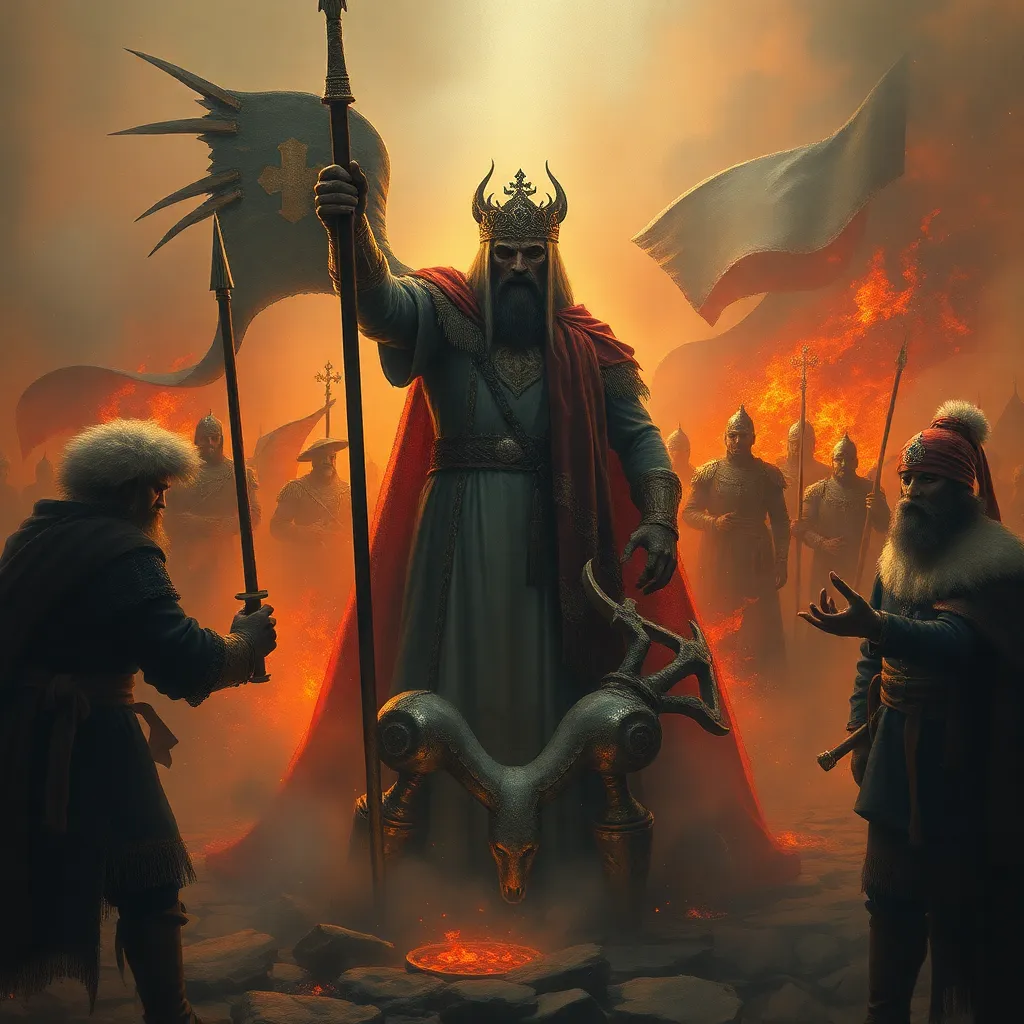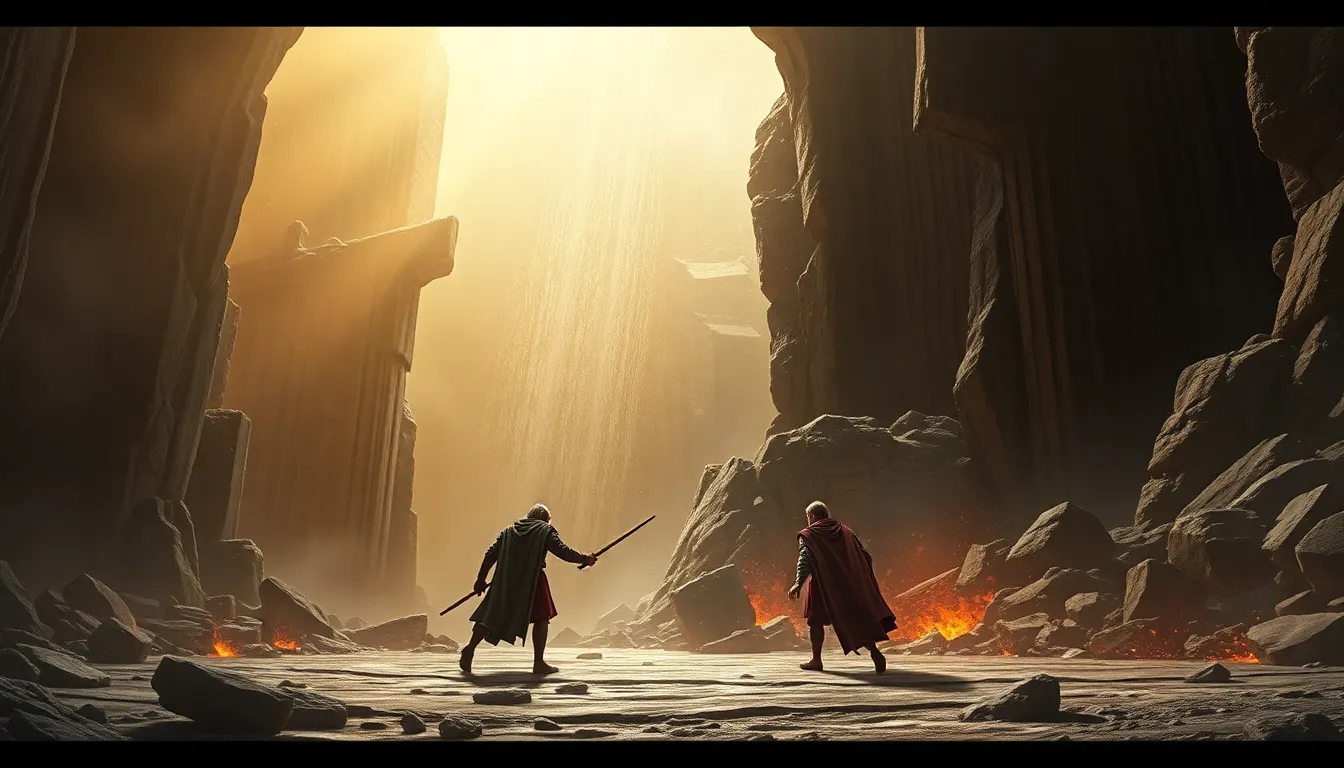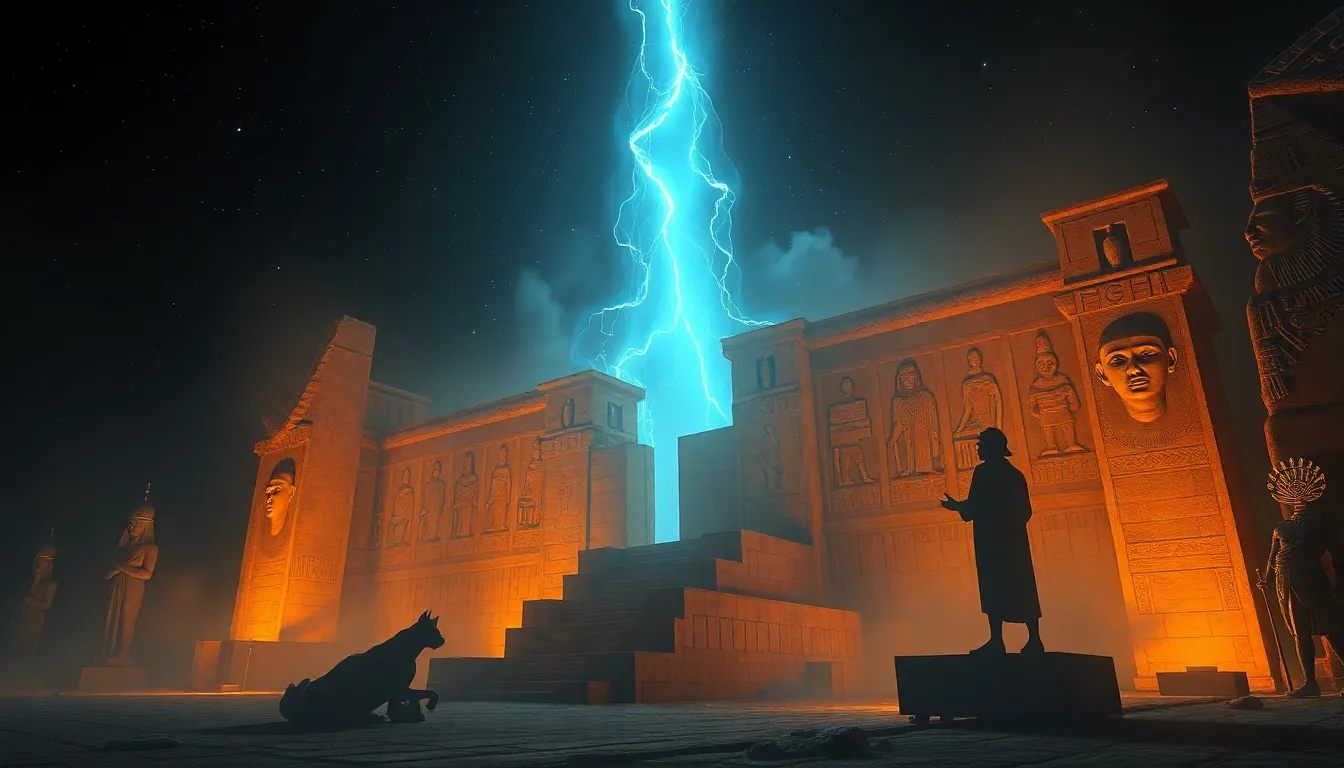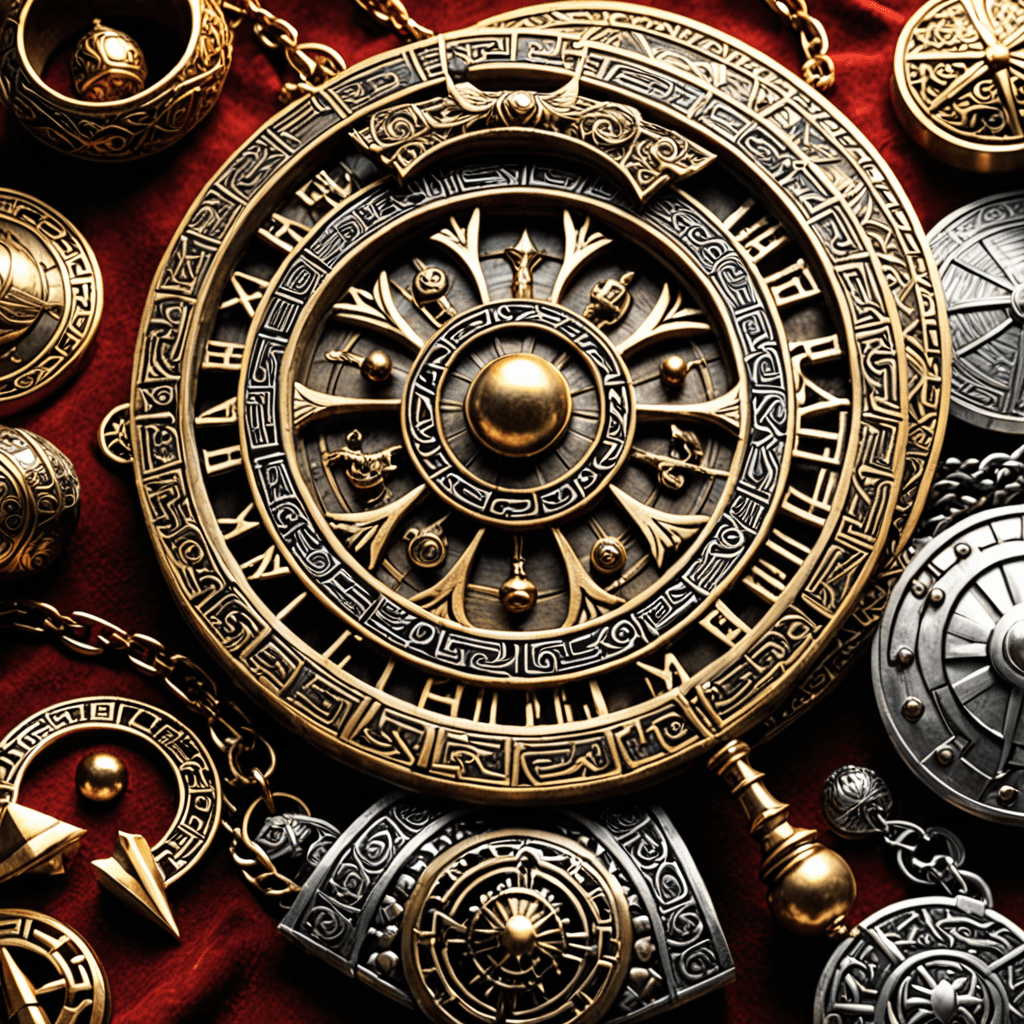The Tsar’s Nemesis: Koschei and the Struggle for Power in Slavic History
I. Introduction
Koschei the Deathless is a formidable figure in Slavic mythology, known for his cunning, malevolence, and elusive immortality. He represents the darker aspects of power and tyranny, often acting as an antagonist to the rightful rulers in various tales. The significance of Koschei transcends mere folklore; he embodies the eternal struggle for authority and control that resonates deeply within Slavic history and culture. This article aims to explore the dynamics of power through the lens of Koschei’s narrative, examining his origins, character, and the implications of his legend in both historical and modern contexts.
II. The Mythological Origins of Koschei
Slavic mythology is rich with tales that reflect the values, fears, and aspirations of ancient Slavic peoples. Koschei, known as “Koschei the Deathless,” emerges from this mythological landscape as a powerful yet fearsome figure. His character is often described as a skeletal man or a wizard, embodying the traits of a tyrant with magical abilities.
Koschei’s immortality is a central aspect of his character; he is said to hide his soul in a needle, which is in an egg, which is in a duck, which is in a hare, which is in an iron chest, buried under a great oak tree. This convoluted hiding of his soul symbolizes the lengths to which he will go to maintain his power and evade death.
In Slavic folklore, Koschei plays a recurring role as an antagonist, often kidnapping princesses and challenging heroes. His presence in these tales serves as a cautionary figure, representing the dangers of unchecked ambition and tyranny.
III. Koschei as a Representation of Tyranny and Fear
Koschei’s actions and motivations are deeply intertwined with themes of tyranny and fear. As a character, he embodies the archetype of the ruthless ruler who will stop at nothing to maintain his grip on power. His immortality is not merely a gift; it is a curse that drives him to commit heinous acts in pursuit of greater control.
- Fear of the Unknown: Koschei represents the fear of what is beyond mortal understanding—his immortality and magical prowess make him a figure of dread.
- Symbolism of Power: His quest for domination reflects the archetypal struggle between good and evil, where his tyranny opposes the rightful order represented by the Tsar.
- Cultural Impact: Koschei’s character has influenced the perception of rulers in Slavic cultures, often serving as a metaphor for oppressive regimes and the fear they instill in the populace.
IV. The Struggle for Power: Koschei vs. the Tsar
The Tsar, as a representation of legitimate authority, often stands in stark contrast to Koschei’s malevolence. In various narratives, the Tsar embodies the rightful ruler, tasked with protecting his people against the chaos represented by Koschei.
Key narratives illustrate the direct opposition between Koschei and the Tsar:
- The Hero’s Journey: Many tales feature a brave hero who must confront Koschei to rescue a kidnapped princess, symbolizing the struggle against tyranny.
- Rebellion and Resistance: The narratives often emphasize the theme of resistance against oppression, with heroes rallying to challenge Koschei’s rule.
- Redemption of Authority: The defeat of Koschei often restores order and reaffirms the Tsar’s legitimacy, highlighting the cyclical nature of power struggles.
V. Koschei’s Influence on Historical Rulers
Throughout history, various rulers in Slavic regions have embodied aspects of Koschei, illustrating the interplay between folklore and real political power. The legend of Koschei serves as a mirror reflecting the complexities of leadership and authority.
Historical figures who encountered their own “Koschei” include:
- Ivan the Terrible: His reign was marked by tyranny and fear, reminiscent of Koschei’s oppressive nature.
- Catherine the Great: While she is often celebrated for her accomplishments, her encounters with rival factions can be likened to battles against mythological foes.
- Peter the Great: His efforts to modernize Russia came with resistance from traditionalists, echoing the struggle against the forces of chaos represented by Koschei.
VI. The Legacy of Koschei in Modern Slavic Culture
In contemporary literature and media, Koschei’s portrayal has evolved while retaining his core characteristics. He remains a potent symbol of the struggle for power and the complexities of authority.
Modern representations of Koschei include:
- Literature: Authors continue to draw on Koschei’s legend to explore themes of power and tyranny in their works.
- Film and Animation: Koschei has appeared in various films and animated adaptations, often reinterpreted for modern audiences.
- Discussions of Authority: Koschei’s narrative is relevant in discussions about leadership, showing how historical fears can inform contemporary views on power.
VII. Comparative Analysis: Koschei and Other Mythological Figures
Koschei shares similarities with mythological figures from other cultures, such as Loki from Norse mythology and Hades from Greek mythology. These figures encapsulate universal themes of power, immortality, and rebellion.
Key comparisons include:
- Loki: Both figures embody chaos and challenge authority, often acting in opposition to the established order.
- Hades: While Hades rules the underworld, his association with death parallels Koschei’s immortality and the fear it invokes.
- Universal Themes: These mythological figures reflect societal fears and aspirations, illustrating the timeless nature of the struggle for power.
VIII. Conclusion
Koschei the Deathless serves as a powerful symbol in the narrative of Slavic history, representing the eternal struggle for power and the complexities of tyranny. His character not only reflects the fears of ancient Slavic peoples but also resonates with modern discussions about authority and leadership. The lessons learned from Koschei’s story continue to shape cultural narratives, reminding us of the delicate balance between power and responsibility.
Through the lens of Koschei’s myth, we gain insight into the nature of power, the consequences of tyranny, and the importance of resistance against oppression. As we reflect on these themes, it becomes clear that the enduring nature of Koschei’s legend speaks to the timeless human experience of grappling with authority.



